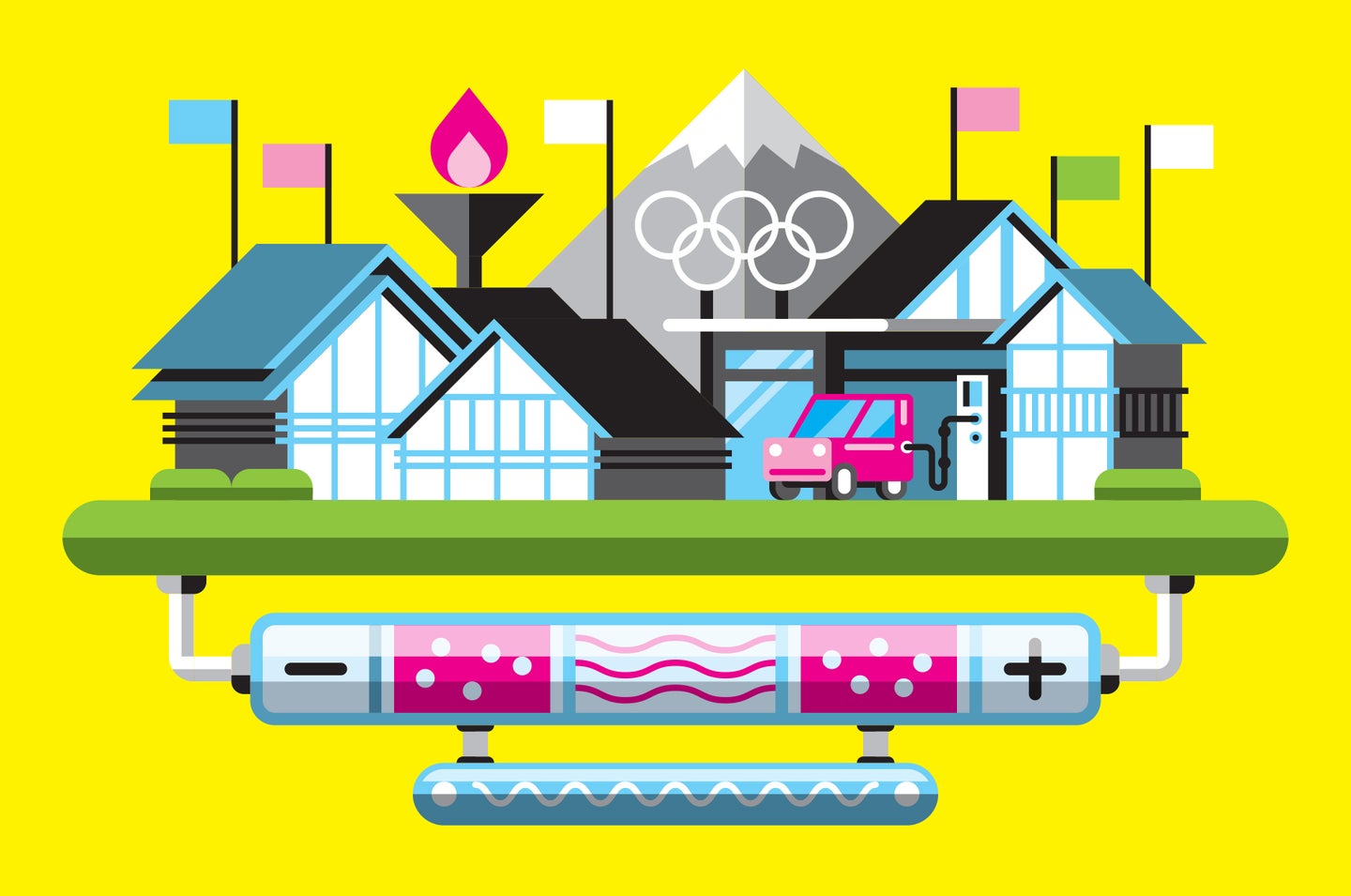The Olympic Village Of The Future
Tokyo 2020 will be the best ever for society


Hosting the Olympics can put serious strain on a country’s infrastructure and finances. In preparation for the 2016 games, Rio de Janeiro has dealt with issues ranging from sewage-filled lakes to an uncompleted subway line. In Sochi in 2014, hotels went unfinished after the Winter Olympics began—the whole affair cost Russia a record $51 billion. But Japan, home of the 2020 games, wants to make the event good for their country and society. The nation has done it before. To host the 1964 Olympics, Japan launched the Tokaido Shinkansen bullet train, which revolutionized national transportation. Drawing on the Japanese sustainability concept of mottainai (“don’t waste”), Tokyo will use robot cars, holographic displays, and driverless taxis to enhance society, which should make the 2020 games a global winner.
Hydrogen-Powered Village
The Tokyo Metropolitan Government, which is creating the Olympic and Paralympic Village, has earmarked $367 million to develop hydrogen fuel cell cars and refueling stations around the sports complexes. “After the completion of the games, the village will be an environmentally friendly residential district powered by a next-generation hydrogen system,” says Hikariko Ono, a spokesperson for the games.
8K Broadcasting
For spectators who won’t be in the stands, the Olympic Broadcasting Service will be shooting the entire Tokyo Games in 8K UHD—16 times the resolution of standard high-def. Some viewers don’t have to wait: As a trial run, OBS will film 130 hours of Rio’s festivities in what it calls Super Hi-Vision 8K. Japan’s national broadcast station, NHK, has signed on to broadcast it. Tune in to see Bob Costas’ pores in all their 7,680-by-4,320-pixel glory.
Biofueled Flights
Companies like Airbus and United have tested biofueled flights, powered by things like used cooking oil and algae. But now, Boeing, All Nippon Airlines, and others are investigating a range of options, including inedible plants like a flowering house plant and an oil seed plant, and algae-based sources. The biofuels require large amounts of plant mass, so various Japanese companies have constructed large-scale farms and algae cultivation pools to produce enough of the green stuff to power all of the games’ potential air traffic.
Driverless Taxis
Japanese Prime Minister Shinzo Abe proclaimed that robo-taxis would be present at the games. Tokyo-based Robot Taxi soon stepped in to take orders. Initial field tests for the cabs—which use a “Robovision” stereo camera to navigate and can be hailed by cellphone—began this past March in Kanagawa Prefecture. But the technology still needs some tweaks, like teaching the software to read maps.
Holographic Information
Most holograms (think Tupac at Coachella) are just digital images projected on thin screens and visible only from certain angles. But Mitsubishi Electric has developed true holographic technology, projecting a 3D image you can actually walk around. The tech uses a beam splitter and a retro-reflective sheet to make images appear to float. It won’t better society, but these holograms might just be the coolest event in Tokyo 2020.
This article was originally published in the July/August 2016 issue of Popular Science.